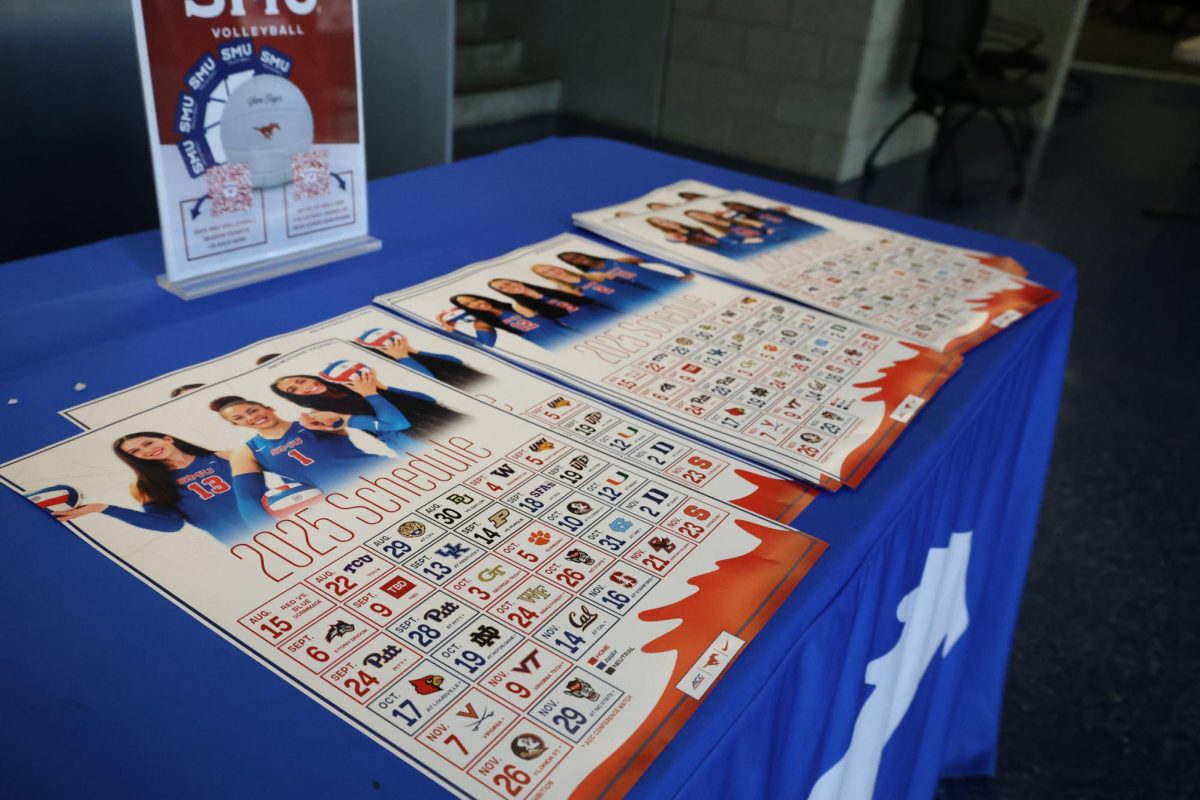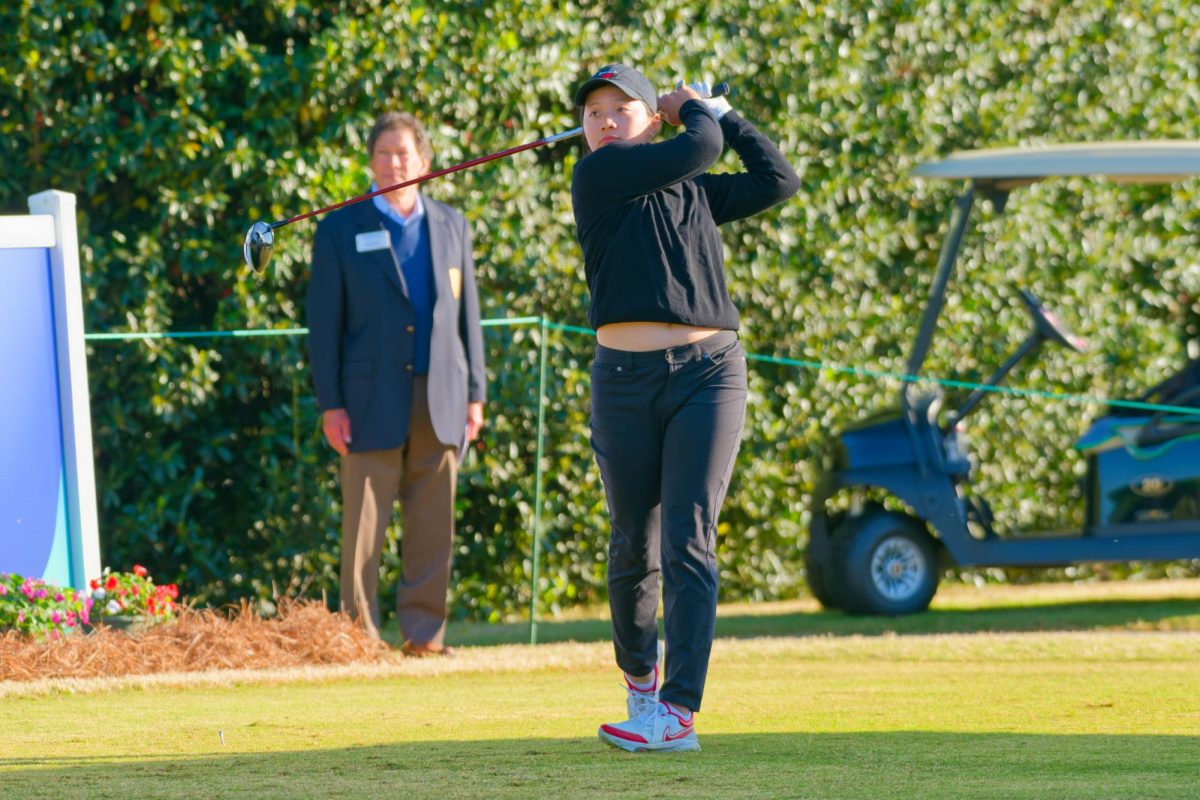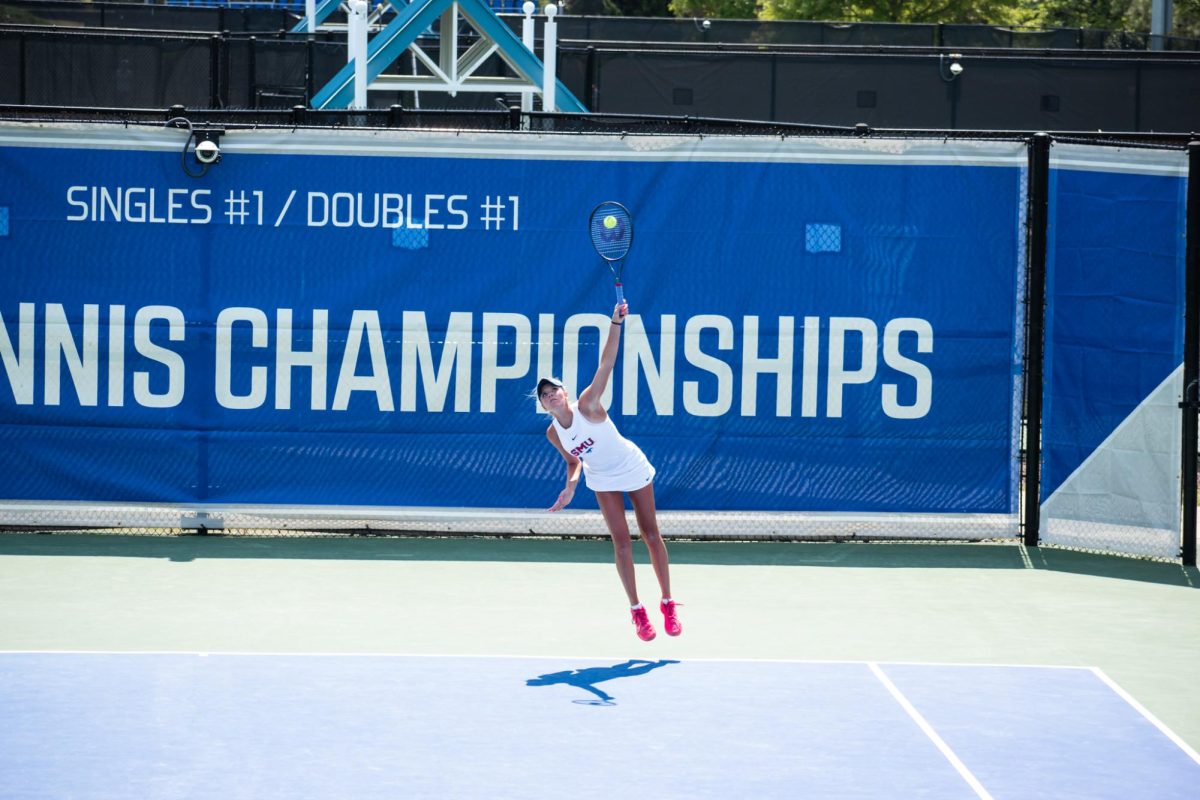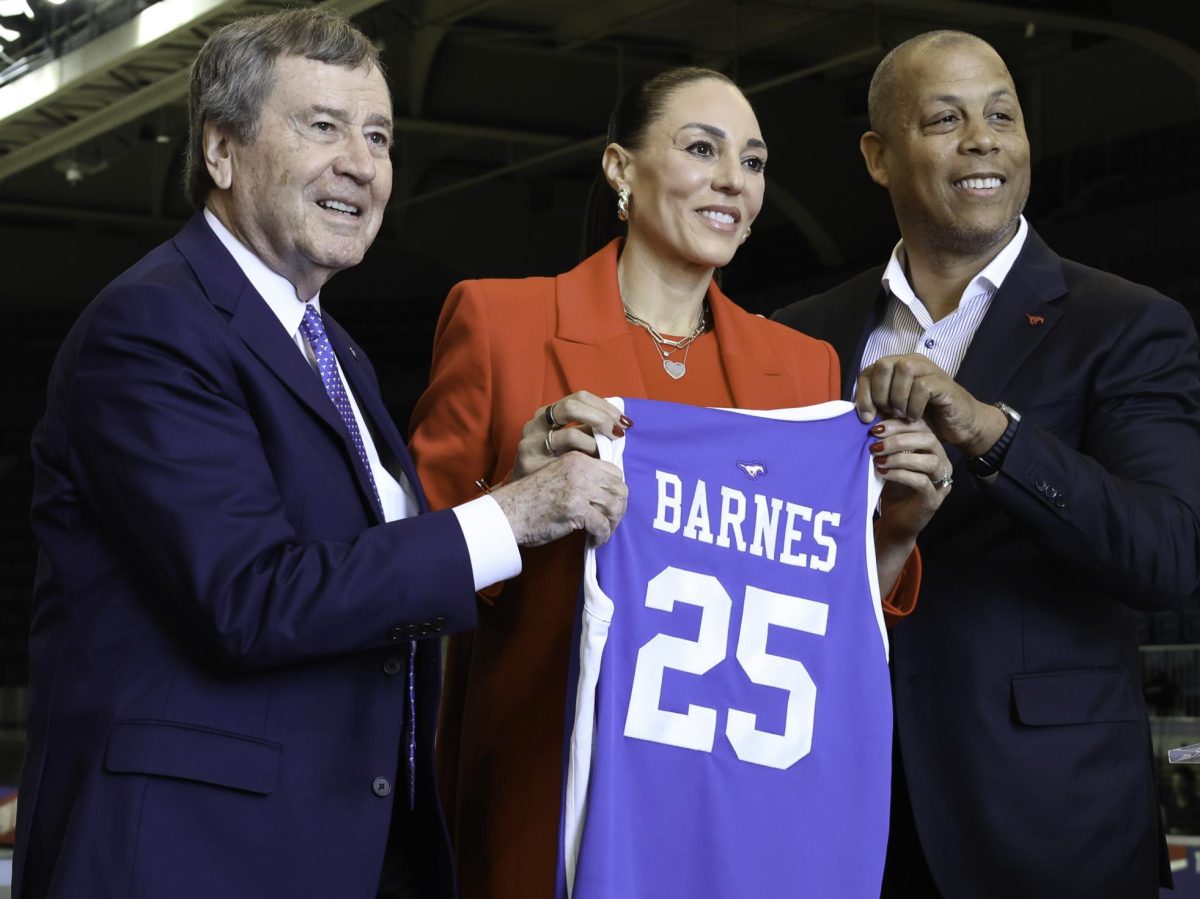
Ajee Montes walks into class with his SMU hoodie, some grey sweatpants, and Nike slides on. Montes, a large, athletically built man, sits towards the front of the class, but not too far forward because then he would attract too much attention when he inevitably puts his head down to rest for a second.
Other students share their musings about him: “Oh, he must have had a fun night,” or, “Well, maybe he shouldn’t have pulled an all-nighter.”
But Montes, a red-shirt sophomore from La Puente, California, wasn’t out partying the night before, nor was he up late studying. Montes is a starting defensive back for the SMU Mustangs, which means long hours every day spent perfecting his game when other student are leading more typical college lives.
“Being an athlete is very tiring and a lot of hard work, but I wouldn’t trade it for anything in the world,” Montes said. “It’s early mornings and late nights but the feeling I get when I run out of the tunnel and hear the fans going crazy, I know in my heart everything is worth it.”
Life for Division-1 athletes can be a balancing act. Some students think they have it rough when a busy schedule means getting their homework done, attending club meetings, playing in an intramural game, and then maybe running out to dinner with friends. Imagine tacking on an additional four or more hours a day to train and practice, which not only forces an athlete to wake up earlier but also leaves them physically exhausted. And they do it, rain or shine.
While many Division-1 student athletes receive scholarships to play their sport, many do not. Many athletes put in all that time and energy without an athletic scholarship because, like Montes, they will do anything to play.
There are 252 NCAA Division-1 football teams nationwide with about 125 players each and only 85 available scholarships. That’s about 31,500 Division-1 athletes who wake up earlier, work harder, and do more in a day than most college students can say. And that’s only football.
This past season, the SMU football team recorded only one win in 12 games, but that didn’t stop the athletes from waking up at 6:15 a.m. to go to treatment for any injuries and then to an 8 a.m. practice.
And it’s not just the SMU football players who are stretched for time. Janelle Giordano, starting middle blocker for the SMU women’s volleyball team, said there are many times when she’d like nothing more than a day off.
“But then I look at my teammate standing next to me and realize that’s why I play,” Giordano said. “I’m getting to do what I love and for a lot of people their dreams don’t become reality.”
Mustang athletes have to go to class for three or four hours a day like every other student on campus, but they also have meetings and workouts after. They also have to make sure to do their homework and keep their grades up. And they probably also try to put in some time for their friends and eating food here and there.
That’s not to say that student athletes don’t receive some help along the way, however. According to Lindsey Olsen from SMU Athletics Public Relations, SMU student-athletes are in charge of managing their own timetables, but they can also receive help from academic advisors and life skills coaches.
Student athletes are able to enroll in classes before anyone else so they can make sure their class schedules don’t get in the way of their practice schedules. Athletes also get to use Giddy-up during the day if they’re going to be late to class and need a ride. SMU has also implemented the NCAA’s optional free meal plan for student athletes just this past year.
Idi Camara, an SMU sophomore and starting forward for the men’s soccer team, wakes up to eat breakfast at 7 a.m. before a two-hour training session. He then goes to class, has treatment, eats dinner, and then goes to mandatory study hours.
“No, it’s not fun! I have no life! But no doubt, it is worth it,” Camara said. “Soccer is my passion though, I would do anything to play.”
Camara estimates that 85 percent of his friends are his teammates, 7 percent are other athletes and just 8 percent are non-athletes. Camara believes that athletes are just like everybody else and it wouldn’t make a difference if he was friends with more non-athletes.
“We are all the same, the only difference is that we play sports. Even if I was friends with more non-athletes, we would still do the same things that my friends and I do,” Camara said.
NCAA bylaw 17.02.1.1 states that athletes can only spend 20 hours per week on “countable athletically related activities,” but for most SMU athletes, their lives are dictated by their sports.
While sports like football, soccer, and basketball dominate the SMU sports scene, SMU boasts other successful teams, such as the men’s golf team and the men’s and women’s swimming and diving teams. These smaller teams put in equal amounts of hard work, often with less recognition.
Senior men’s swimmer Pablo Lara has one of the most grueling schedules of any student-athlete, but his daily routine has translated in the success of his team. Lara wakes up at 5:30 a.m., goes to practice at 6 a.m., has breakfast with his team, goes to class, has afternoon practice from 3:30 to 6 p.m. then has to have dinner and do homework.
“Now repeat that schedule everyday, except Sunday,” Lara said. “I could tell you a funny story about me falling asleep in class but I fall asleep everyday in class so it doesn’t really count.”
While most Division 1 athletes wouldn’t trade their unique opportunity for a more relaxed lifestyle, SMU has many students that have passed up on college sports for other advantages.
“After four years of swimming in college I would’ve just left the sport behind, so I saw that as wasting time that I could use to study and hangout with friends. Some things last longer than four years unlike college sports,” said Donzie Lilly, a sophomore accounting major and member of Phi Delta Theta fraternity.
Some athletes get to experience the non-athlete life when they get injured, but each one counts down the days until they can compete again. Montes suffered a season ending concussion a couple games into the 2014 football season and had a chance to live the life of an average student.
“I was seriously going crazy, I missed it so much,” Montes said. “Being a student athlete has taught me time management, accountability, and how to be a leader.”









